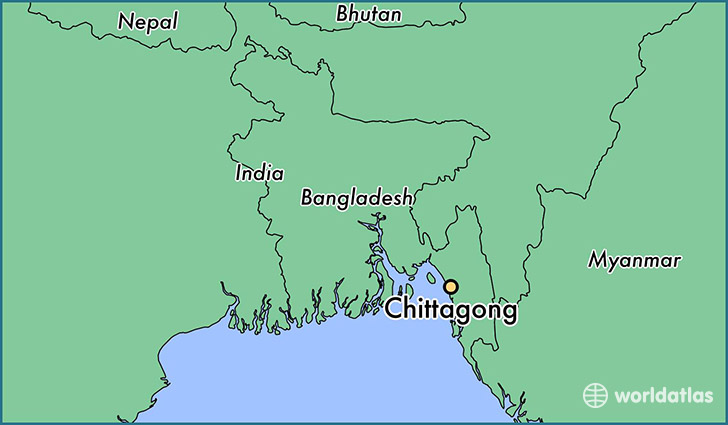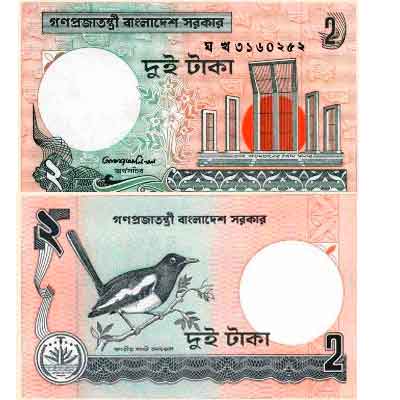What you need to know about Chittagong

Chittagong is a major coastal seaport city and financial centre in southeastern Bangladesh. The city has a population of more than 2.5 million while the metropolitan area has a population of over 6.5 million, making it the second largest city in the country. It is the capital of an eponymous district and division. The city is located on the banks of the Karnaphuli River between the Chittagong Hill Tracts and the Bay of Bengal. Much of Chittagong Division is located within the ecological Indo-Burma zone on the boundary of the India Plate and Burma Plate. This makes Chittagong the crossroads of the Indian subcontinent and Southeast Asia. The port city has been known by various names in history, including Chatigaon, Chatigam, Chattagrama, Islamabad, Chattala, Chaityabhumi and Porto Grande De Bengala.
The natural harbour of Chittagong is an ancient gateway to the region of Bengal. It was noted as one of the largest Eastern ports by the Roman geographer Ptolemy in the 1st century. As part of the rich seafaring tradition of the Bengali people, coastal Chittagong was settled and ruled by Indian and Bengali kingdoms. Modern Chittagong is an important economic hub in South Asia. It is home to the Chittagong Stock Exchange and many of Bangladesh’s oldest and largest companies. The Port of Chittagong is the largest international seaport on the Bay of Bengal. It is the largest base of the Bangladesh Navy. Though despite having a high and growing urban per capita GDP in South Asia and being one of the fastest growing cities in the world, the city has a poverty rate of 11.3{2b4786682bf6b54810a1ba1353aaf1c99b56c587c12810b21627a3a978cdbc4a}, as of 2010. Chittagong is reputed as a relatively clean city, but still confronts substantial logistical and socioeconomic problems. The mountainous hinterland of Chittagong is the most biodiverse region in Bangladesh, with 2000 endemic plants and various critically endangered wildlife.
Population: 2.582 million (2011)
Area: 60.62 mi²
Currency
The Bangladeshi taka (Bengali: টাকা, sign: ৳ or Tk, code: BDT) is the currency of the People’s Republic of Bangladesh. Issuance of banknotes ৳10 and larger is controlled by Bangladesh Bank, and for the ৳1, ৳2 and ৳5 banknotes, which are the responsibility of the Ministry of Finance of the government of Bangladesh.

The Taka is the currency of Bangladesh and is subdivided into 100 poisha. The most commonly used symbol for the Taka is Tk and ৳. In Bengali, the word “taka” is also used to mean any money, currency, or notes. Thus, colloquially, a person speaking Bengali may use “taka” to refer to money regardless of what currency it is denominated in.
Climate
The climate is tropical in Chittagong. Chittagong has significant rainfall most months, with a short dry season. According to Köppen and Geiger, this climate is classified as Am. The average temperature in Chittagong is 25.7 °C. About 2794 mm of precipitation falls annually. Chittagong suffered its deadliest cyclone in 1991; it killed 138,000 people and left as many as 10 million homeless.
Language
The official language is Bangla, also known as Bengali. It is the first language of more than 98 percent of the population. It is written in its own script, derived from that of Sanskrit. Many people in Bangladesh also speak English and Urdu.
Health
The Chittagong Medical College Hospital is the largest state-owned hospital in Chittagong. The Chittagong General Hospital, established in 1901, is the oldest hospital in the city. The Bangladesh Institute of Tropical and Infectious Diseases (BITID) is based the city. Other government-run medical centres in the city include the Family Welfare Centre, TB Hospital, Infectious Disease Hospital, Diabetic Hospital, Mother and Children Hospital and the Police Hospital. Among the city’s private hospitals are the Chittagong Metropolitan Hospital, Surgiscope Hospital, CSCR, Centre Point Hospital, National Hospital and Mount Hospital Ltd.
Economy
Chittagong generates for 40{dcc1354f558f3589946c8a745324820b226b58e81181a79e43eedd0ffe1df9bf} of Bangladesh’s industrial output, 80{dcc1354f558f3589946c8a745324820b226b58e81181a79e43eedd0ffe1df9bf} of its international trade and 50{dcc1354f558f3589946c8a745324820b226b58e81181a79e43eedd0ffe1df9bf} of its governmental revenue. The Chittagong Stock Exchange has more than 700 listed companies, with a market capitalisation of US$32 billion in June 2015. The city is home to many of the country’s oldest and largest corporations.
Getting Around
Chittagong has wide range of transport systems from cycle-rickshaws to buses to water buses. A public transport system is existent which is on a reformation process.
Cycle rickshaws or simply, rickshaws, are the most popular form of transport, and good for short distances, mainly on side streets. They make up the bulk of the city’s horrendous traffic. Negotiating a fare beforehand is essential as a foreigner. Rickshaws are not allowed to cross most of the main roads. If you’re a woman, it’s particularly inadvisable to ride around alone in rickshaws after dark; you’re a slow-moving target asking for trouble from thugs and muggers.
Auto-rickshaws, locally known as ‘CNGs’ (named after compressed natural gas, their fuel source) are abundant and have meters, which drivers can sometimes be persuaded to use. They’re the cheapest way to cover longer distances.
Taxis are hard to hire from streets so you will need to book one. There are a few types taxis, some yellow and some black, some white, all with meters. Yellow taxis have slightly higher standards in terms of comfort but are more expensive. Black and white taxis are typically in notoriously poor condition and lack air conditioning. Yellow taxis are required to have air conditioning; the fleet consists mostly of Toyota Corollas, with some Mitsubishis and Hondas. But if you are a foreigner, a CNG is in many cases the better option because in a car, you are clearly visible as a foreign passenger which will in many cases attract many beggars and street vendors.
Buses run routes on the main roads, but are often horribly crowded and noisy, signed only in Bengali and aren’t likely to be of much use to travelers. But there are some buses which only take passengers if seats are available and you have to buy a ticket at one of the bus counters in advance. During the rush hour, it can be difficult to get a seat and maybe you will have to wait in line with the other passengers. But taking the bus is cheap and once you found out which bus you have to take and where you have to get off, it is possible without speaking any Bengali.
Many locals often use bicycles as a primary form of transport. They can be useful in their ability to squeeze through tight situations, where traffic may prevent a larger vehicle from moving at all. Some newer roads in the capital have dual bike/rickshaw lanes.
The trains in Bangladesh only operate between major regional cities. There is no suburban or metro rail system in Chittagong.










